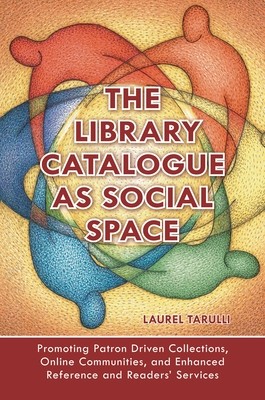
- We will send in 10–14 business days.
- Author: Laurel Tarulli
- Publisher: LIBRARIES UNLIMITED
- Year: 2012
- Pages: 122
- ISBN-10: 1598846299
- ISBN-13: 9781598846294
- Format: 15.5 x 23.1 x 1.5 cm, minkšti viršeliai
- Language: English
- SAVE -10% with code: EXTRA
Reviews
Description
This book is a guide to the library catalogue that all public library professionals will find enlightening and useful. Its technical services perspective provides a different point of view as compared to traditional public library literature, which is often written by frontline professionals. For example, it poses and examines this thought-provoking question: should library catalogues be considered the primary gateway to the library's information, rather than the library website?
Author and collection access librarian Laurel Tarulli examines next-generation or "social" catalogues, discussing the theories and concepts behind them, their impact on core library services, and their potential in shaping future libraries and library services. Geared toward frontline and backroom staff, this book helps readers understand next-generation catalogues and see the collaborative opportunities that are possible between the frontline and backroom. Written to be much more than a "one-time" read, this resource book provides practical ideas for beneficial collaboration and implementation of social features in library catalogues.
EXTRA 10 % discount with code: EXTRA
The promotion ends in 22d.16:24:19
The discount code is valid when purchasing from 10 €. Discounts do not stack.
- Author: Laurel Tarulli
- Publisher: LIBRARIES UNLIMITED
- Year: 2012
- Pages: 122
- ISBN-10: 1598846299
- ISBN-13: 9781598846294
- Format: 15.5 x 23.1 x 1.5 cm, minkšti viršeliai
- Language: English English
This book is a guide to the library catalogue that all public library professionals will find enlightening and useful. Its technical services perspective provides a different point of view as compared to traditional public library literature, which is often written by frontline professionals. For example, it poses and examines this thought-provoking question: should library catalogues be considered the primary gateway to the library's information, rather than the library website?
Author and collection access librarian Laurel Tarulli examines next-generation or "social" catalogues, discussing the theories and concepts behind them, their impact on core library services, and their potential in shaping future libraries and library services. Geared toward frontline and backroom staff, this book helps readers understand next-generation catalogues and see the collaborative opportunities that are possible between the frontline and backroom. Written to be much more than a "one-time" read, this resource book provides practical ideas for beneficial collaboration and implementation of social features in library catalogues.


Reviews